- Home
- Carolyn Wells
Murder in the Bookshop
Murder in the Bookshop Read online
‘THE DETECTIVE STORY CLUB is a clearing house for the best detective and mystery stories chosen for you by a select committee of experts. Only the most ingenious crime stories will be published under the THE DETECTIVE STORY CLUB imprint. A special distinguishing stamp appears on the wrapper and title page of every THE DETECTIVE STORY CLUB book—the Man with the Gun. Always look for the Man with the Gun when buying a Crime book.’
Wm. Collins Sons & Co. Ltd., 1929
Now the Man with the Gun is back in this series of COLLINS CRIME CLUB reprints, and with him the chance to experience the classic books that influenced the Golden Age of crime fiction.
Copyright
COLLINS CRIME CLUB
an imprint of HarperCollinsPublishers Ltd
1 London Bridge Street
London SE1 9GF
www.harpercollins.co.uk
This Detective Club edition published 2018
First published in the USA by Grosset & Dunlap 1936
‘The Shakespeare Title-Page Mystery’ published in The Dolphin by the Limited Editions Club 1940
Introduction © Curtis Evans 2018
Cover design © HarperCollinsPublishers Ltd 2018
Carolyn Wells asserts the moral right to be identified as the author of this work.
A catalogue copy of this book is available from the British Library.
This novel is entirely a work of fiction. The names, characters and incidents portrayed in it are the work of the author’s imagination. Any resemblance to actual persons, living or dead, events or localities is entirely coincidental.
All rights reserved under International and Pan-American Copyright Conventions. By payment of the required fees, you have been granted the non-exclusive, non-transferable right to access and read the text of this e-book on screen. No part of this text may be reproduced, transmitted, down-loaded, decompiled, reverse engineered, or stored in or introduced into any information storage and retrieval system, in any form or by any means, whether electronic or mechanical, now known or hereinafter invented, without the express written permission of HarperCollins.
Source ISBN: 9780008283025
Ebook Edition © November 2018 ISBN: 9780008283032
Version: 2018-08-24
Dedication
TO MY LONG-TIME FRIENDS
MR AND MRS ALFRED F. GOLDSMITH
THIS BOOK IS DEDICATED
IN ALL GOOD-WILL
Contents
Cover
Title Page
Copyright
Dedication
Introduction
I. THE CRIME IN THE BOOKSHOP
II. RAMSAY’S WORD IS DOUBTED
III. GUY DEMANDS HIS RIGHTS
IV. FLEMING STONE TAKES THE CASE
V. INQUIRIES
VI. STONE AND HIS SUSPECTS
VII. A LIST OF SUSPECTS
VIII. THE PASTED LETTER AND ANOTHER
IX. THE OTHER
X. THE DEATH OF THE SCION
XI. ALLI RESPONDS TO THE LETTER
XII. WHERE DID ALLI GO?
XIII. RAMSAY GETS BUSY
XIV. BENSON BUSY TOO
XV. STONE STARTS ON HIS QUEST
XVI. THE AWFUL BIG MAN
XVII. HELD BY THE ENEMY
XVIII. AFTER ALL
THE SHAKESPEARE TITLE-PAGE MYSTERY
The Detective Story Club
About the Publisher
INTRODUCTION
THE resurgence of popular interest in vintage mystery fiction of the twentieth century has led to the revival of a steadily mounting number of crime writers whose works, though often extremely popular in their day, had long lain out of print and been mostly forgotten outside of occasional, cursory references in studies by genre specialists. One such renascent author is American Carolyn Wells, who once was characterized, in a 1968 magazine article by John Dickson Carr, past master of the locked-room mystery, as one of mystery fiction’s ‘lost ladies now well lost’. Today, a half-century after Carr penned those sad words, vintage mystery fans again are finding their way to the detective fiction of Carolyn Wells, and the former ‘lost lady’, now happily redeemed, is enjoying renewed popularity. This is a remarkable reversal of fortune which would, no doubt, have immensely amused the author, a woman known for her wryly humorous outlook on the myriad blows and buffets of life.
Born on 18 June 1862 in the town of Rahway, New Jersey to parents whom she termed ‘the very ultramarine of Blue Presybyterians’, Carolyn Wells, though comfortably circumstanced in a material sense, received at an early age some sharp slaps from the hand of Fate. Two of Carolyn’s four siblings died in childhood, one from the same scarlet fever contagion that had struck her as well, leaving the future author’s hearing progressively impaired over time. For the rest of her life she had to wear hearing aids to make speech partially audible. ‘[Deafness] doesn’t bother me so much,’ Wells later wrote forthrightly, ‘but it is a hardship, and though I bear it smilingly it is an insincere smile.’
After graduating as valedictorian from Rahway High School, Carolyn Wells remained at the family home with her parents and her surviving sister, though she took classes with noted Shakespearean scholar William James Rolfe in Cambridge, Massachusetts and for years found a prized personal outlet in her service as head librarian at the Rahway Public Library. Wells departed the family nest for good at the age of 55 when in 1918 she wed Hadwin Houghton, a 62-year-old widower and cousin of a co-founder of the publishing firm of Houghton, Mifflin. The couple took up residence in Manhattan at the newly erected Hotel des Artistes, an elegant and exclusive apartment building overlooking Central Park that was later home for a time to such luminaries as Rudolf Valentino, Norman Rockwell and Noël Coward; but their connubial bliss was short-lived, Houghton passing away in 1919. ‘I had him with me but a few years,’ Wells fondly recalled of her beloved spouse, ‘and those were so crammed with joyful interest that they are now my most blessed memory.’ As a widow Wells remained in New York, residing with her housekeeper-companion and a cook at the same apartment at the Hotel des Artistes until her own death nearly a quarter-century later, in 1942.
Carolyn Wells made her entrée into the literary world through her interest in the nonsense literature of English authors Edward Lear and Lewis Carroll. Her earliest publications came in the form of humorous poetry which appeared in the 1890s in Punch and The Lark, a journal published and edited by her ‘literary chum’ Gelett Burgess (1866–1961), creator of those notorious fictional churls, the Goops, and author of a classic nonsense poem, ‘The Purple Cow’. Wells was adept at word games and puzzles, a talent which served her well as an author of cleverly contrived nonsense but also came of use in her other major literary endeavour (aside from her popular children’s tales about two irrepressible young girls named Marjorie and Patty): the writing of detective fiction.
Like Agatha Christie, Carolyn Wells first became smitten with detective fiction after hearing read aloud a book authored by American detective novelist Anna Katharine Green—although for Wells the inspirational text was not Green’s bestselling debut mystery, The Leavenworth Case (1878), but rather a later, then contemporary, Green tale, That Affair Next Door (1897). ‘To a listener entirely unversed in crime stories or detective work it was a revelation,’ Wells recalled. ‘I had always been fond of card games and of puzzles of all sorts, and this book, in plot and workmanship, seemed to me the apotheosis of interesting puzzle reading. The mystery to be solved, the clues to be discovered and utilized in the solution, all these appealed to my brain as a marvellous new sort of entertainment …’
Carolyn Wells’s novice essay in crime fiction was ‘The Maxwell Mystery’, which appeared serially in May 1906, when Wells was 43 years old, and introduced to the worl
d the patrician and perceptive Fleming Stone, by far the most renowned of the author’s series sleuths. Wells published her first full-fledged Fleming Stone detective novel, The Clue, in 1909. A total of 82 Wells detective novels would appear between 1909 and 1942, of which 61 detailed the amazing investigative exploits of Fleming Stone.
During these fecund years, which also saw the publication of Wells’s influential guide to writing mysteries, The Technique of the Mystery Story (1913), Carolyn Wells produced some of the most popular detective fiction in the United States, though admittedly she was far less well-known in the United Kingdom. (However, G. K. Chesterton, creator of Father Brown, once praised Wells as ‘the author of an admirable mystery called Vicky Van’.) In the crime yarns, like Vicky Van, The White Alley and The Curved Blades, which Carolyn Wells published during the 1910s, the decade which immediately preceded the Golden Age of detective fiction, there cohered many of the elements—genteel country house settings, dastardly locked-room murders, fatally ferocious domestic squabbles—that today are commonly associated with mysteries from the bright and blindingly clever era of such insouciant yet implacable master sleuths as Hercule Poirot, Lord Peter Wimsey, Reggie Fortune, Philo Vance and Ellery Queen.
Throughout the 1920s and 1930s Carolyn Wells maintained her considerable popularity in the US, with sales of her mysteries more than quadrupling the average sales of most other crime writers. (Among her legion of fans during these years there numbered the young John Dickson Carr.) By early 1937 Fleming Stone detective novels through direct sales had grossed almost one million dollars, something on the order of seventeen million dollars today, putting her in the select company of such Golden Age American mystery writers as S. S. Van Dine and Mary Roberts Rinehart, authors who actually managed to become wealthy though mystery writing. This was a time, we should recall, when most detective fiction devotees borrowed their favoured form of reading fare at the cost of a few cents a day from rental libraries.
Contemporary newspaper interviews with Wells typically took note of her beautiful luxury apartment filled with exquisite antiques. Having been bitten, like her crime-writing countryman S. S. Van Dine, by the collecting bug (though Van Dine’s passion, for a time, was tropical fish), Wells amassed a valuable hoard of nearly five hundred Walt Whitman volumes, which she bequeathed upon her death to the Library of Congress. In her pursuit of Whitman she was amply assisted by renowned bookseller Alfred F. Goldsmith, who for three decades, up to his death in 1947, did business from the Sign of the Sparrow, his basement bookshop on Lexington Avenue in Manhattan, a veritable Mecca for bibliophiles. Together in 1922 Wells and Goldsmith authored A Concise Bibliography of the Works of Walt Whitman.
Fourteen years after her collaboration with Alfred F. Goldsmith, Carolyn Wells fictionalized the Sign of the Sparrow as the site of the first slaying in her 43rd Fleming Stone detective novel, the bibliomystery Murder in the Bookshop (1936), which she also dedicated to her friend. Alfred Goldsmith has been credited with the droll remark that ‘the book business is a very pleasant way of making very little money’, yet in Murder in the Bookshop a rare book really is something to die for, with characters desperately vying for possession of a tome worth an estimated $100,000 (about $1.7 million today). The fatally contested book, an abstruse treatise on taxation, has been thrice signed and annotated by no less a personage than Button Gwinnett, one of the 56 signers of the American Declaration of Independence, whose autograph remains in especially high demand from collectors today on account of its rarity. Gwinnett was slain in a duel less than a year after he signed the Declaration and today there are only ten of his autographs held in private hands, one of which recently sold in New York for $722,500.
When avid book collector and Button Gwinnett fancier Philip Balfour is found literally skewered to death in John Sewell’s rare bookshop, there are suspects aplenty in the wealthy New Yorker’s death, including not only John Sewell and his smooth assistant, Preston Gill, but Balfour’s charming young wife, Alli; his earnest librarian, Keith Ramsay (who has admitted to being enamoured with Alli); and his own son by a prior marriage, Guy Balfour, something of a feckless man-about-town. Though the police find themselves baffled by the murder of Balfour and the theft from Sewell’s shop of the Button Gwinnett book, Fleming Stone fortunately is at hand to provide illumination. Yet even the great Fleming Stone has his hands full with crime this time, what with a second devilish murder (this one taking place in a locked bathroom), a ruthless abduction and the Great Detective’s own entrapment inside a locked room! In this deadly game of Button, button, who’s got the button?, will it be Fleming Stone or the murdering fiend who comes out the winner? You surely do not have to be another Fleming Stone or Philo Vance to deduce the answer to that question.
Appended in this volume to Carolyn Wells’s Murder in the Bookshop is ‘The Shakespeare Title-Page Mystery’, a short story originally published in 1940 in The Dolphin, the journal of the Limited Editions Club of New York. Eleven years earlier Wells had provided an introduction for the Club’s lovely edition of Walt Whitman’s literary landmark, Leaves of Grass, and it was to The Dolphin in 1940 that she contributed one of her very few works of short detective fiction. This tale of literary shenanigans (with murder included) concerns the sudden appearance of a pair of putative first edition copies of Shakespeare’s narrative poem Venus and Adonis (1593), likely the Bard’s very first publication. Possibly Wells was partly influenced in the writing of this mystery by recent shocking revelations concerning the nefarious activities of British bibliophile Thomas J. Wise, who in fictionalized form figures in British mystery writer E. R. Punshon’s detective novel Comes a Stranger (1938).
At the end of Carolyn Wells’s story—one of the last pieces of detective fiction which the author, who died in 1942, ever published—we learn of a rare book that providentially survived German air raids in London and made its way over to safety in the United States. Until the war is over and the book’s true owner is located, pronounces one of the characters in the story, good care must be taken of it: ‘The precious little volume is also a refugee, and a refugee is ever a sacred trust.’ Wells did not herself survive the war, passing away in her eightieth year, and her books shortly afterward went out of print for many decades, but today vintage mystery fans can in one volume read both ‘The Shakespeare Title-Page Mystery’ and Murder in the Bookshop, a pair of bibliomysteries that are among the rarest works in Wells’s vast—and once vastly popular—corpus of crime fiction.
CURTIS EVANS
February 2018
CHAPTER I
THE CRIME IN THE BOOKSHOP
MR PHILIP BALFOUR was a good man. Also, he was good-looking, good-humoured and good to his wife. That is, when he had his own way, which was practically always.
When they came to live in New York, Philip Balfour wanted to live on Park Avenue and Alli, his wife, wanted to live on Fifth Avenue. They lived on Park Avenue.
Then, Balfour wanted a duplex apartment, and Alli was all for a penthouse. So they had a duplex.
To be sure, they could have found an apartment which combined the two horns of the dilemma, but they didn’t. Philip didn’t favour a penthouse.
And in her three years of married life Alli had learned that compliance is the best policy. She was a darling, Alli was, with soft, short brown curls and soft, big brown eyes. Tallish, slender and carelessly graceful, she devoted her energies to the not-too-easy task of being Philip Balfour’s wife. With full realization of what she was doing she had thrown over, actually jilted, a young man she was engaged to in order to become Mrs Balfour.
And had seldom regretted it. Although her husband was twenty years older than herself, she was naturally adaptable, and save for one problem that was at present engrossing her attention, she was quite happy.
She adored her home and lavished time and money on its adornment and improvement.
The main room, intended as a drawing room or living room, was enormous and was Balfour’s library. He was a retired
Real Estate man and an enthusiastic collector of old and rare books. He had a capable and experienced young man for his librarian, but Alli did much to assist in the care of the books.
Of late, Balfour had noticed that Keith Ramsay, his valued librarian, was not quite as effective as he had been. The young man sometimes forgot to attend to an order or seemed unsure as to his collations or translations.
And when, one evening, he sat listening to his employer talk, he showed such a brooding air and such a vacant countenance that Balfour said:
‘Whatever is the matter, Ramsay? Are you ill? Are you worried about something?’
‘Yes, I am, Mr Balfour. Shall—shall I tell you about it?’
‘If you like,’ was the indifferent reply, for the speaker somehow sensed that the matter was unconnected with his books.
‘Then, to put it plainly, I am giving you what is, I believe, called “notice”.’
‘You’re not leaving me, Ramsay?’ Balfour was roused now. ‘That will never do! Want more salary? Anything wrong in the house?’
‘That comes near it. Something wrong in the house—with me.’
‘Out with it, then, and we’ll soon settle it.’
The two men were alone in a small room adjoining the library. This was used as an office and also held a small specially built safe, which housed the most valuable volumes.
‘I wish we could, Mr Balfour, but I doubt it. To state my case in a few words, I am in love with your wife and, therefore, I have decided to leave you as that seems to me the only honourable course.’
‘You are indeed frank. You are acting nobly, I have been told angels do no more than that. And may I inquire if Mrs Balfour returns your affection?’
‘I have not asked her. I am told that to run away from danger is considered a cowardly act, but that is what I propose to do. It will be best for us all.’
‘Pardon me, if I disagree with that statement. It may, of course, be better for you—and possibly for Mrs Balfour—to see no more of one another, but don’t undertake to say what is best for me. You are very necessary to my well-being—I cannot so readily dispense with your services. I never can find an assistant who is so perfectly fitted to look after my books, my future purchases and my collection generally. I have no intention of letting you go because of a silly flirtation between you and Alli. In fact, I think you overestimate your own charms. I doubt my wife is seriously interested in you or your attentions. So just drop the idea of leaving me. I’ll speak to the lady herself concerning this, but I desire you to stay with me in any case.

 The Deep Lake Mystery
The Deep Lake Mystery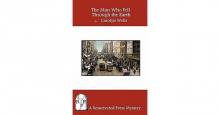 The Man Who Fell Through the Earth
The Man Who Fell Through the Earth The Mystery of the Sycamore
The Mystery of the Sycamore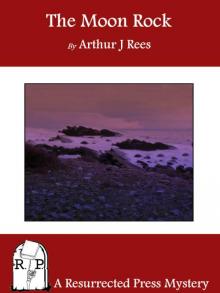 The Mystery Girl
The Mystery Girl Patty Blossom
Patty Blossom Patty and Azalea
Patty and Azalea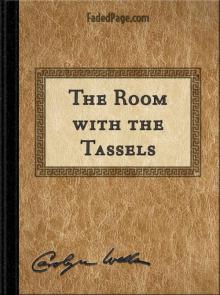 The Room with the Tassels
The Room with the Tassels The Vanishing of Betty Varian
The Vanishing of Betty Varian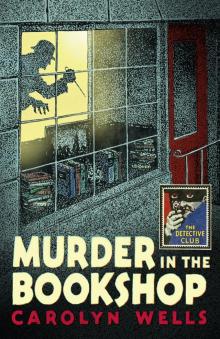 Murder in the Bookshop
Murder in the Bookshop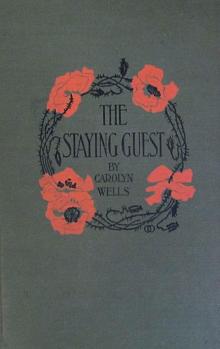 The Staying Guest
The Staying Guest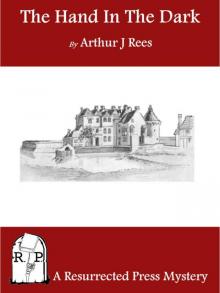 The Curved Blades
The Curved Blades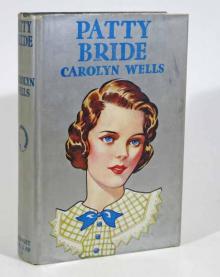 Patty—Bride
Patty—Bride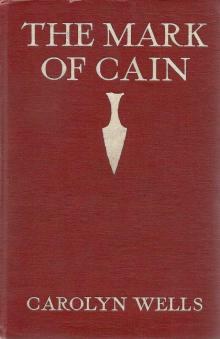 The Mark of Cain
The Mark of Cain Two Little Women on a Holiday
Two Little Women on a Holiday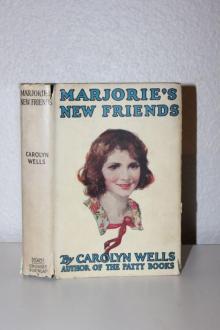 Marjorie's New Friend
Marjorie's New Friend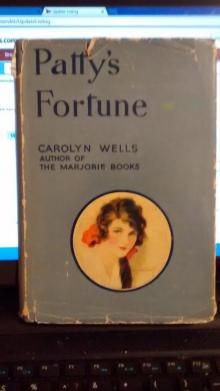 Patty's Fortune
Patty's Fortune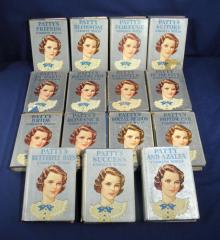 Patty's Social Season
Patty's Social Season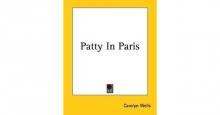 Patty in Paris
Patty in Paris The Diamond Pin
The Diamond Pin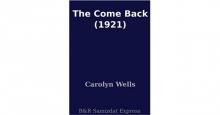 The Come Back
The Come Back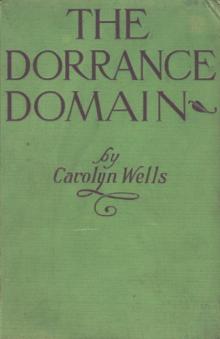 The Dorrance Domain
The Dorrance Domain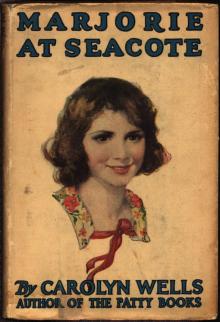 Marjorie at Seacote
Marjorie at Seacote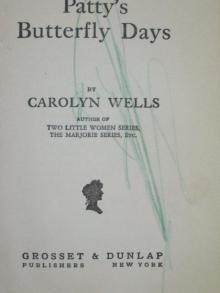 Patty's Butterfly Days
Patty's Butterfly Days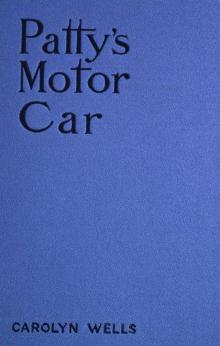 Patty's Motor Car
Patty's Motor Car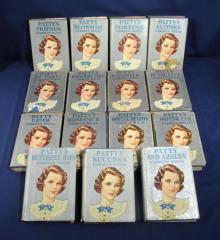 Patty's Success
Patty's Success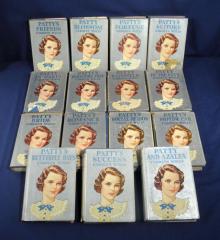 Patty's Suitors
Patty's Suitors Patty's Summer Days
Patty's Summer Days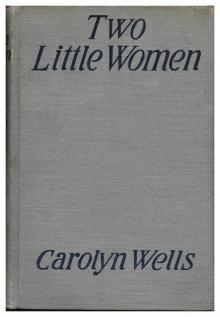 Two Little Women
Two Little Women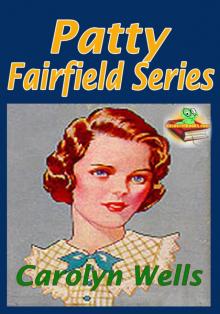 Patty Fairfield
Patty Fairfield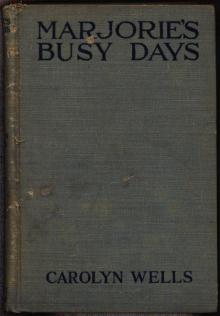 Marjorie's Busy Days
Marjorie's Busy Days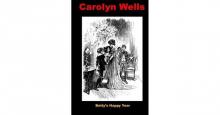 Betty's Happy Year
Betty's Happy Year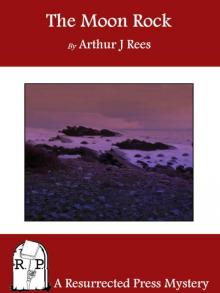 In the Onyx Lobby
In the Onyx Lobby Marjorie's Maytime
Marjorie's Maytime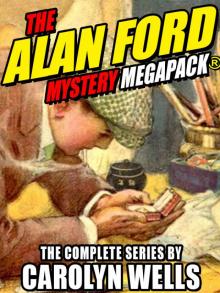 The Alan Ford Mystery MEGAPACK®
The Alan Ford Mystery MEGAPACK®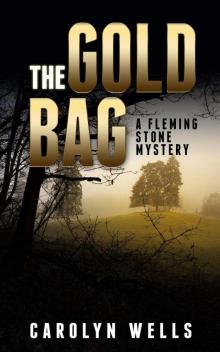 The Gold Bag
The Gold Bag The Clue
The Clue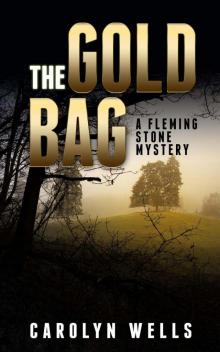 The Gold Bag : A Fleming Stone Mystery
The Gold Bag : A Fleming Stone Mystery